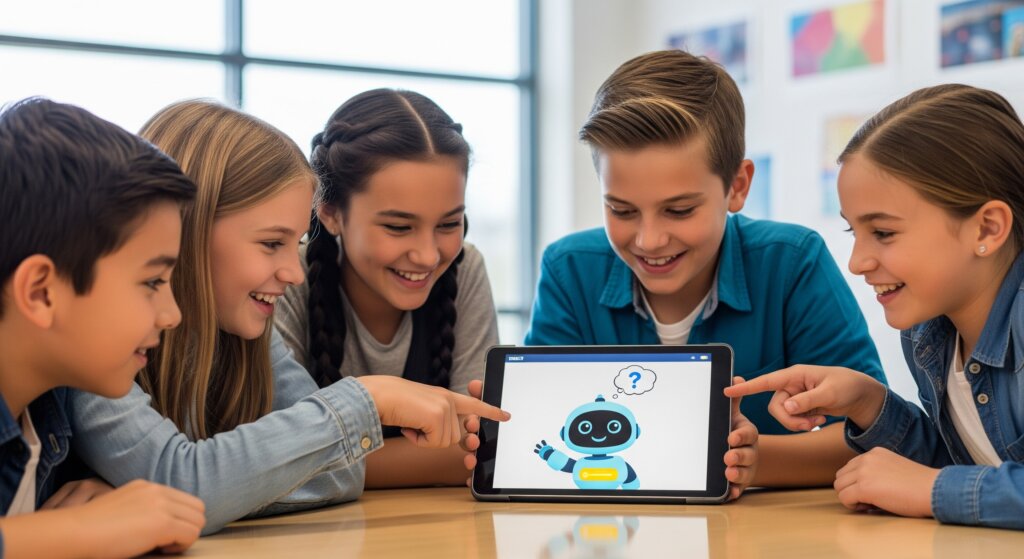Education has always been marked by the introduction of new tools that transform the way we teach and learn. From the printing press to the internet, each technological advance has raised new questions about how to balance performance and understanding. Today, we are facing one of the fastest and most profound transformations: the arrival of generative artificial intelligence.
Technology related to Generative AI (GenAI) has experienced rapid and deep penetration in the educational world—probably the technology with the greatest impact in the shortest period in history. Approximately 85% of secondary and university students use GenAI in their daily studies, while around 75% of teachers report using it to prepare or deliver lessons (GoStudent, 2025). This trend appears set to become permanent.
The immediate appeal and its implications for learning
Many students find it comforting and rewarding to use ChatGPT for writing tasks, as it makes the process easier, reduces effort, and delivers quick, well-organized results. This sense of immediate efficiency reinforces their positive perception of the system, making it attractive even when they are not fully engaging in reasoning or critically reviewing the generated content (Stadler, Fischer, & Greiff, 2024). In an education system based on performance and competitiveness, as is the case today, its use is inevitable. Never before has it been so easy to achieve excellent performance with such minimal cognitive processing.
The use of these tools by students improves immediate performance, as they deliver final products aligned with the evaluation criteria of the most common educational processes—generally coherence, organization, and content. However, scientific evidence suggests that this improvement in performance is not necessarily linked to an improvement in learning (Deng et al., 2025). This disconnect has long been a topic of concern and analysis in the education system, but it has become particularly important in the age of GenAI, where the gap between performance and learning has widened dramatically.
Dialogic and reflective use of GenAI for real learning
The gap between performance and learning is mainly due to the uncritical and non-reflective use of generative artificial intelligence tools, which often leads to a simple, direct transcription of generated responses into the final product submitted to the teacher. This passive, uncritical approach may improve immediate performance, but it does not promote understanding or long-term learning.
In contrast, using GenAI in a dialogic way—acting as an assistant that prompts questions, encourages reflection, and supports the student’s decision-making—turns the interaction into a shared thinking process. This approach fosters cognitive and metacognitive engagement, self-regulation, and meaningful elaboration, all of which are key to real and transferable learning. As Chen and Chang (2024) point out, when AI is used as dialogic scaffolding—helping students reflect, review, and self-regulate rather than simply providing direct answers—it enhances learning outcomes and strengthens intrinsic motivation.
However, this dialogic and reflective use requires a level of knowledge and maturity that is difficult to achieve in the early stages of education. Therefore, it is advisable to use GenAI tools specifically designed to generate these learning processes automatically, by applying different methodological approaches and offering personalized, real-time feedback based on data obtained from the student (Jin et al., 2025).
To support this evolution toward a more effective and personalized use of artificial intelligence in the classroom, there are tools designed specifically to promote this type of learning. At Blinklearning, we offer TUTOR AI, an intelligent assistant that integrates into the daily teaching process and accompanies students in individual sessions to reinforce the concepts they struggle with most, fostering reflection, self-regulation, and meaningful learning without reducing the cognitive effort required. Instead of giving the answer, it provides structured support so that students can build it themselves, or instead of simply defining a concept, it helps them understand it. All of this takes place under the teacher’s control, ensuring that technology becomes a true ally in personalizing learning and improving performance.

Risks associated with GenAI
This use of AI is not without risks. One of the main challenges is its inconsistent performance depending on the task, described by Kwan, Li, and Xu (2025) as the “jagged frontier” of AI capabilities. This concept highlights that, while AI can deliver high-quality solutions in certain tasks—such as medical exams or programming exercises—its performance is neither predictable nor uniform. Even in similar tasks, its accuracy can vary greatly. This irregularity poses a challenge for learning, as students cannot always anticipate when AI will provide a correct answer and when it will not.
As a result, if students lack sufficient knowledge or critical skills to verify what AI produces, they risk incorporating errors without realizing it. In other words, a user with knowledge of the subject can recognize when the answer falls short of expectations and will reframe or find another way to continue their work. However, a user without that knowledge will automatically assume the answer is correct. This situation not only limits learning but can also foster dependency and weaken self-regulation.
The importance of developing critical skills in students
The jagged frontier underscores the importance of developing students’ skills to verify and think critically about AI-generated results. In any case, this risk can be partially mitigated through proper model training and by contextualizing it with specific content and activities. The model performs better when given more precise instructions, such as references to developments or sample responses for activities. This feature highlights the importance of content as a basic reference point around which AI operates.
To support teachers and students in this process of critical and personalized learning, Blinklearning offers innovative solutions that facilitate the integration of artificial intelligence in the classroom—always with a focus on the autonomous and reflective development of students. If you would like to explore how these tools can transform your teaching practice, we invite you to learn more about TUTOR AI and the possibilities it offers to enhance learning.
Sources:
- Chen, H.-C., & Chang, C.-Y. (2024). Effectiveness of AI-assisted game-based learning: A quasi-experimental study of generative AI support in science education. British Journal of Educational Technology. Advance online publication. https://doi.org/10.1111/bjet.13456
- Deng, H., Wu, J., Zhang, Y., & Sun, R. (2025). Does ChatGPT enhance student learning? A systematic review and meta-analysis of experimental studies. Computers & Education, 205, 105936. https://doi.org/10.1016/j.compedu.2024.105936
- GoStudent. (2025). Informe sobre educación e inteligencia artificial 2025. https://www.gostudent.org/static/documents/es-es/informe-educacion/2025.pdf
- Jin, X., Pei, Q., Ng, C. K., & Sun, Y. (2025). Analytics of self-regulated learning in learning analytics feedback processes: Associations with feedback literacy in secondary education. Smart Learning Environments, 12(1), 2. https://doi.org/10.1186/s40593-025-00486-6
- Kwan, Y., Li, T., & Xu, M. (2025). Distinguishing performance gains from learning when using generative AI. Educational Psychology Review, 37(1), 55–78. https://doi.org/10.1007/s10648-025-09765-9
- Stadler, M., Fischer, F., & Greiff, S. (2024). Does ChatGPT function as a cognitive shortcut? Investigating students’ cognitive and metacognitive engagement in AI-assisted academic writing. Smart Learning Environments, 11(1), 6. https://doi.org/10.1186/s40561-024-00316-7


